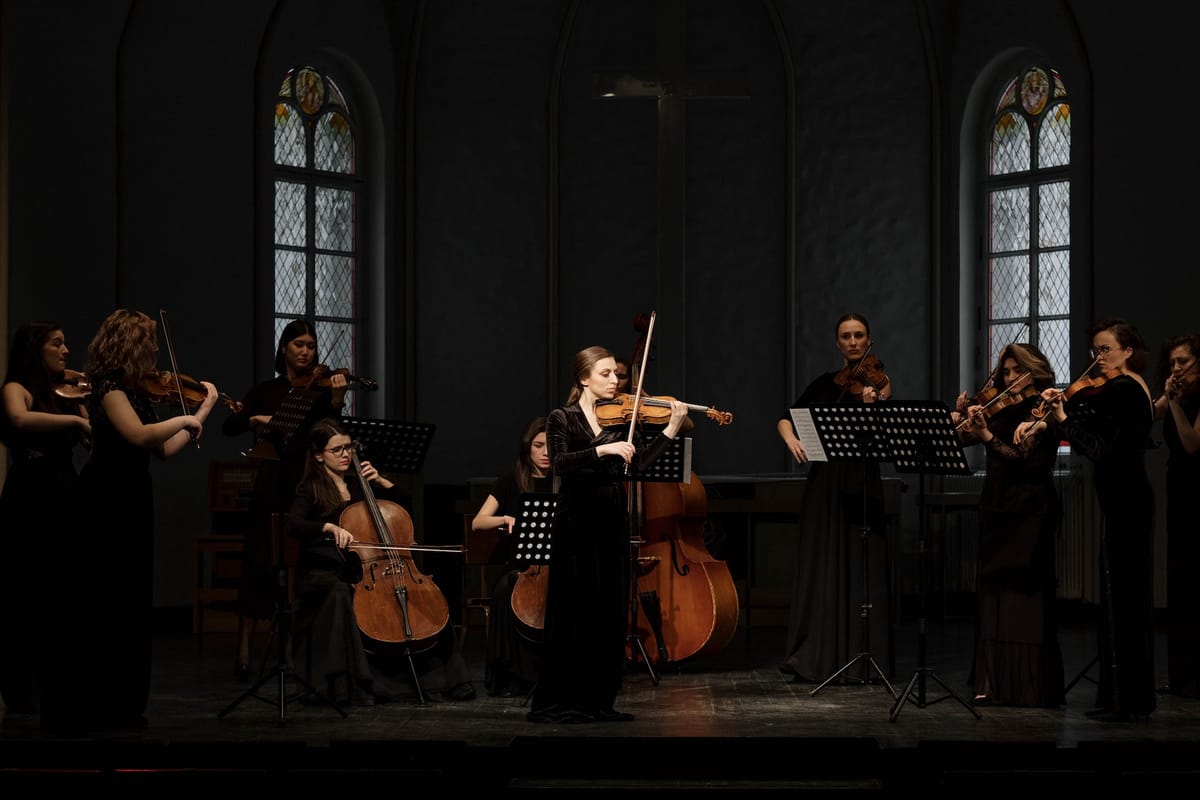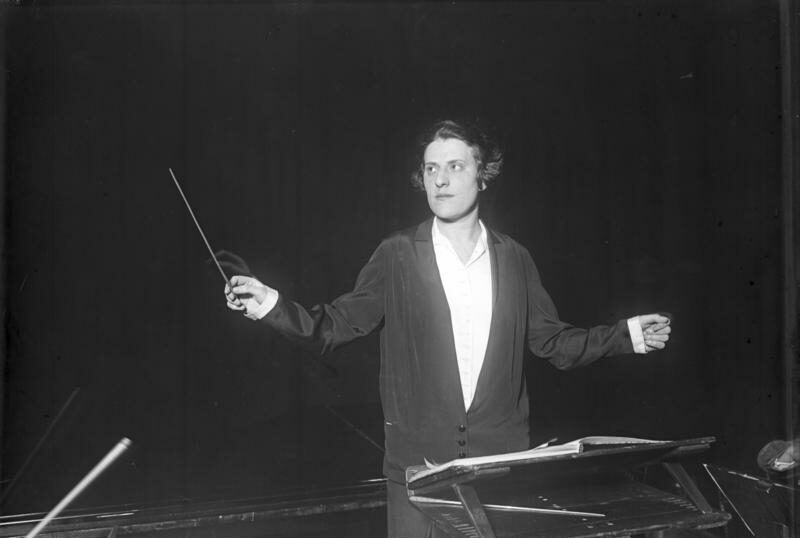Orchestral Gender

What is the current situation with respect to parity in gender representation in Western classical orchestras compared to the 20th century?
Keeping in mind history of women employment in orchestras, the orchestras of today showcase progress with increased female participation. However, there is a long way to go. In this article, I will state and analyse reasons for unequal representation of women in orchestras in the 21st century. I will present reasons supported by published data as to why even though there is evident change in the gender composition, it is far from enough. The comparison being drawn is with representation in the 20th century as it marks inflection points of the concerned theme.
The first all-female orchestra was initiated in 1898. Women were allowed to join mainstream orchestras only post 1913. 1930 marks the first year a woman conducted an orchestra. Given that it took almost three centuries for women to enter modern symphony orchestras since the inception of the organisation, these facts and figures grip us with an astounding reality. While it can be argued that this timeline hints at progress and a leap towards attaining gender parity in orchestras, is that the only aspect it leads one to? Is the inception of women in the organization enough, or there are changes that follow which have to be consciously brought about?
Even though the outcome beginning from the 20th century is fruitful based on a noticeable change in data, it is incomplete in nature. The inflection points of the time period reflect slow progress. The progress is not so steady however, given the stereotypes propagated by conservative management and elite viewership that still dominate orchestras. Fast forward to over 90 years since the inflection, the average proportion of women in orchestras is still less than 50% while the number of female conductors occupy barely 10% of the total.

The first woman ever to conduct an orchestra, namely Antonia Brico, was extensively criticized for ‘daring’ to occupy the esteemed podium. This was in 1930. Elite traditionalist mindsets and theories have long dominated the classical sphere, with most leaderships and audiences being comprised of them. Sex based discrimination is prevalent in Western classical orchestras even today. 2013 marked the first year a woman conducted ‘Last Night of the Proms’, UK’s most celebrated night of the year (in music) in the show’s 118-year-old history, at the Royal Albert Hall. When Marin Alsop (conductor) took the stage, her podium was decorated with pink balloons (a categorical stereotype: the color pink) which read “It’s a girl!”.
These two incidents, 83 years apart, depict a debatable transition. Women are not criticized for participating anymore, they are celebrated instead. It may be argued that through the latter incident, a ‘first’ is being brought into a spotlight for the world to see and get inspired from. However, looking at it critically, is it so, or is it just a way to ensure attention because ‘she’ waved the baton instead of the usual ‘he’? Why is it that this low representation leads to a label of ‘female conductor’ than just ‘conductor’, which in the course of events manifests entirely differently in terms of expectations and output? It is as Marin Alsop expressed in an interview with Clemency Burton-Hill, she longs for a day when the label could just read ‘conductor’. But till then she will not wait.
These incidents demonstrate how women who make it to the top are looked at differently, the mere reason being their gender. Let alone the struggles and stereotypes that form a natural part of the trajectory for women, the consequential questions raised owing to gender, along with higher expectations and doubts is demotivating, and possibly one of the causes for low number of women in the field. The reality of not having to look up to someone in a field can be disparaging. Despite efforts to make a space inclusive, low numbers can disregard it as not worth exploring- an impact which is aggravating the issue of gender inclusivity in orchestras today. Low numbers cause lower participation, which again leads to lower data, and forms a vicious cycle in the process. Alsop recently expressed in an interview how the statistics are “still shockingly brutal”, compared to what she had expected it to rise to in 2007, when she started leading the Baltimore symphony as a music director. Even though the idea of being a ‘first’ in a field can pose as tempting, it is not enough to propagate inclusion in a real sense.

Sex-based discrimination has been at the helm of the present-day situation in other aspects as well. Sex typing of orchestral instruments is another such detrimental factor. More girls are likely to take up instruments which they have seen women play, instead of choosing an instrument out of choice. This notion could be born out of an ardent desire to play in an orchestra someday and thus take up something which will most likely get them there, or simply because it’s an easy way out (not having to battle stereotypes and uncalled for criticism). This has led to a clear distinction in the range of orchestral instruments and performers. More women tend to occupy sections that play light weight and/or high-pitched instruments, while men dominate the heavier sections.

According to an analytical research paper, the numbers of women employment since the beginning of the 20th century were also linked with their impact on the organization of the orchestra. It was feared that their entry might ‘disturb’ the pre-existing arrangement, or even ‘distract’ male performers*. In the study, it was found that a percentage of less than 10% women in an orchestra maintained its stability and did not make much of a difference. Token value of women players implied they could not demand for any instrumental change in the management, or even voice their concerns, given that the male majority would always get their way regardless. Representation between 10-40% caused tension among the players. The tension rose out of insecurity among male players, born out of a fear of replacement. As per the report, this was deemed as the ‘transitional’ stage, which seemingly heightened the gender divide and posed a ‘risk’ of women trying to ‘control’ or ‘take over’ the organization. However, numbers above 40% seemed ideal. It was a proportion past which both genders were on cordial terms, and the balance of the orchestra could be ‘restored’.
Beginning from token representation of women, orchestras today have covered a considerable distance in terms of integrating more women. There have been training programs for encouraging women to take up conducting. The idea of blind auditions has also been fairly utilized to make unbiased decisions in the recent past. However, representation in terms of numbers has to be sufficiently supported with provisions, for women to feel integrated into the system and not be considered as an exception. There are many aspects which determine how widely accepted a woman in a field is. Some of these include provisions for equal pay and equal acknowledgement across genders in an organization. Even when orchestras started hiring women post 1913, famous organizations like the Vienna Philharmonic did not publicly acknowledge their female harpist, Anna Lelkes, till about 1997. The indirect oppression of roughly 50% of the world, threatens the idea of an inclusive future. To conclude, all these results and figures point at crucial aspects of change: change is not brought about by just numbers or visible results. The impact of change also depends on how it is consumed in the existing society, and the reaction it causes. The increased participation must be able to gain acceptance of their existence in society, else the change does not hold much importance. Thus, even though orchestras today are hiring more women, there is a long path to tread in terms of effecting this transition.
*Note: This was one of the main reasons why the idea of women conducting orchestras was looked down upon. It was feared that male players will get distracted and it will thus be ‘damaging’ to let a woman conduct an orchestra.





